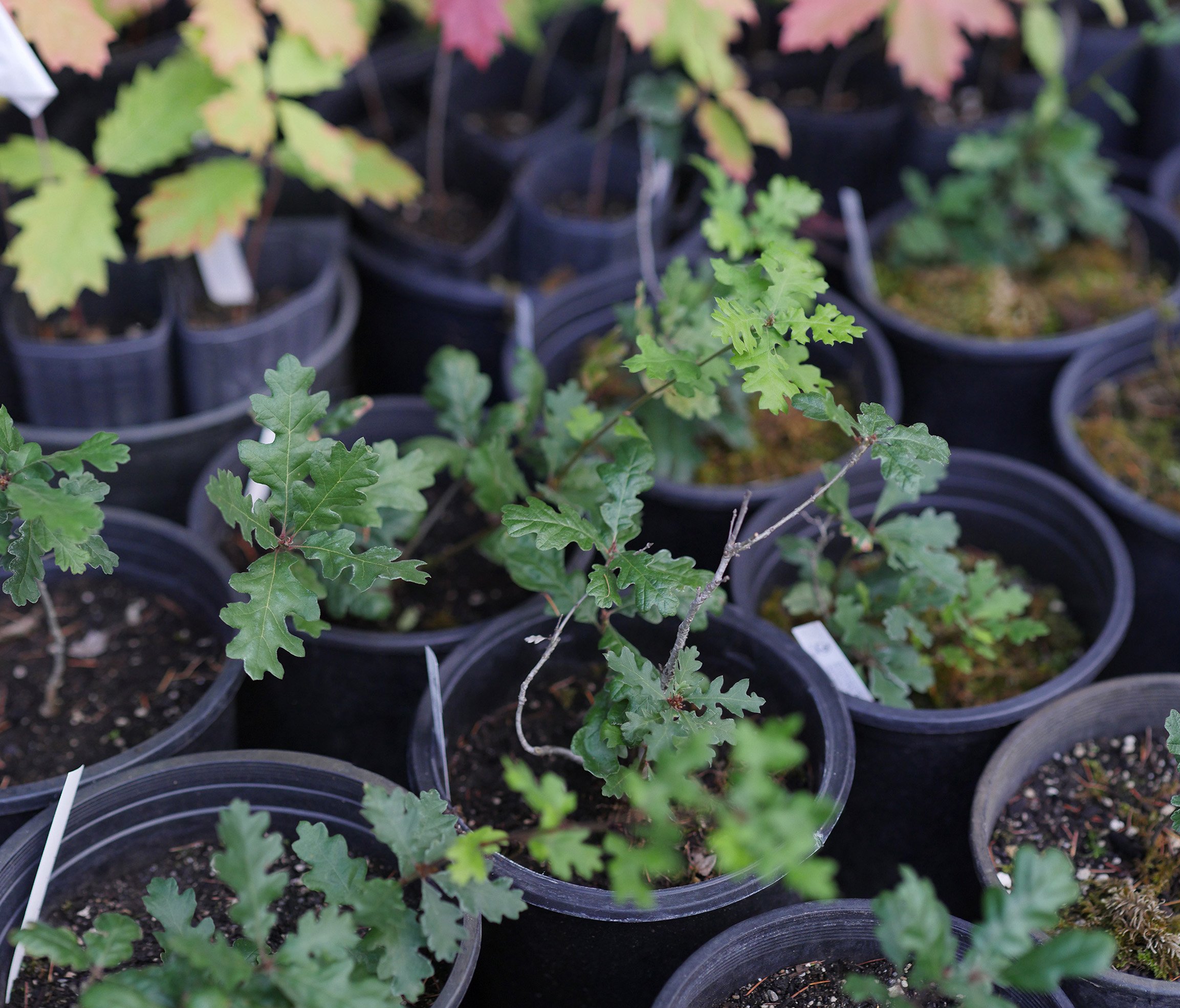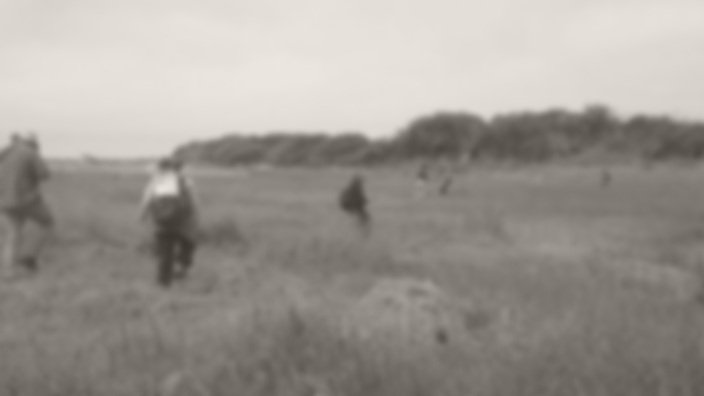
FAQs & Contact Us
-
We’d like to support you in your native and water-wise planting goals, so please reach out to us -- sometimes we can offer you plants we’re currently growing or propagating from salvages, or source plants for you outside of our sale seasons.
In particular, we know that Zone 1 rain garden plants are hard to find — we’ve got sources!
-
Yes, we will accept pots, though we need to connect with the donor in advance to plan to meet them at our nursery (which is not open to the public) and to share what pots we can actually use. Please select “plant pot donations” in our contact form here, and someone will get back to you about a date and time to meet at our holding beds.
Dropping pots off when picking up plants during our twice/year online plant sales can also work if you give us some advanced notice.
Generally, we accept 4" pots, quarts, and ideally 2-gallon and up, though we will accept 1-gallon if they are hard-sided pots (preferring hard-sided overall, but sometimes willing to take soft-sided #2/3 if they are in good shape).
You can also offer them to Eastside Urban Farm & Garden.Here are some other nurseries the county recommends; at this link: https://www.co.thurston.wa.us/apps/sw/wheredoitakemy.html
You'll type in "Plastic Plant Pots & Trays" in the search & it shows other nurseries.
Thanks again for trying to reduce waste in the landfills and reuse materials!
-
-
We have worked with older students (middle and high school aged) on project installations or salvage events where possible. With elementary-aged kids, we've typically done more educational activities with fewer big tools ;)
Write to us with what you have in mind — we could potentially offer a Plant ID Outing mixed with some trail maintenance at Mclane Creek Nature Trail (and for younger kids, less trimming with loppers and more picking up sticks and brushing away debris).
We’re also happy to hear other ideas from you, and will gladly keep you in mind for future events!
-
Visit our Rain garden page, where you can find the Rain Garden Handbook for Western Washington and our 30-minute video overview.
Additionally, Erica created learning modules for WSU a few years ago that go into more depth. These are $100 and available on the LID Training Programs site — you’ll probably want to sign up for the third training, “for non-professionals”.
We also recommend reaching out to your city’s local stormwater staff, if they have that position, and your local conservation district!
-
We suggest you reach out to local conservation districts, conservation organizations, your local government, or university county extensions (as we're a program of WSU Extension Thurston County). They may have information about previous attempts, or might be interested in partnering to create a group!
When planning for salvages, we usually call our jurisdictional planning offices and lay out what we're interested in, and they let us know what parcels might fit our needs. We then follow up with the developers ourselves. You'll want to offer them assurances, including insurance and liability protections, as well as being responsible about where you'll be working and what you'll be doing. The perfect time to get in is after they've decided exactly what they'll be getting rid of, but before they do it!Check out the information in WSU’s publication “Grow Your Own Native Landscape” starting on page 14.
-
Our plants come from a variety of sources:
Our number-one source is the hard work and years of dedicated love and nurturing provided by our volunteers and staff! We coordinate with local developers to seek permission to rescue some plants before the bulldozers arrive. We also do a lot of propagation of plants, both from seeds and cuttings. All of these “home-grown” sources take years of labor and materials to bring native plants from source to your shopping cart! For instance, one small huckleberry may be in our care for 3-5 years before it’s ready for our customers.
Further development of bareroot stock, plugs, and bulbs. We also seek out interesting native and regionally native species available from wholesale specialty nurseries throughout our region. Buying these plant parts in bulk allows us to bring consistent plant material to our customers, and test out its hardiness for our local conditions (some of these regional native species end up failing for us, so we know not to share them).
Regional wholesale nurseries. We have relationships with Thurston County nurseries as well as large suppliers from northern Washington to southern Oregon. We track new varieties, hard-to-find specialty plants, and tried-and-true native and water-wise species that thrive in our local conditions. When we find plants we think our customers will like, or that we want to trial first in local sustainable landscaping projects, we do our best to bring them to our nursery, and ultimately to you. We work with nurseries that do not use neonicotinoid pesticides, and we do our best to buy stock that has been grown organically — mirroring the practices of our own nursery.
Donations. We accept a limited number of donations from divisions from reliable sources (mostly our own volunteers or local non-profit organizations known to use organic practices and maintain weed-free sites). We then nurture those new plants, bulbs, or cuttings until they are ready for their new life making habitat and protecting water resources out in our local community!
-
Fall Planting
Fall is an ideal time to plant all types of plants! Think about bulbs: we plant in fall to give them time to develop roots for a long healthy life. This is also true for our trees, shrubs and perennials.
Here are some basic Do’s and Don’ts when planting.
Do
Plant newly purchased plants right away if you can! The sooner you get them in the ground, the faster they can make new roots for next spring and summer, and be safe from winter freezes.
Ensure that both the new plant and the planting hole are moist.
Massage the roots to open them up so that the healthy roots make direct contact with the soil.
Dig broad holes with roughened sides and cultivate to loosen the soil to aid root penetration.
After planting, make a small dam/watering well outside the perimeter of the plant to slow and focus water, ensuring it penetrates the roots.
Apply a coarse woody mulch and ensure the trunks and/or stems are not buried.
Err on the side of planting a little above the ground level; this allows room for mulch application and ensures that as the plant settles into the soil it won’t be too deeply planted (which leads to waterlogged roots).
Stake, but only if necessary to stabilize the roots, and only for the first year.
Gently water in.
Monitor the root ball for the first few weeks to ensure it does not dry out. Even if it has rained, the moisture does not necessarily get to the root ball.
Don’t:
⊘ Do not prune top growth, except for broken or dead branches or clearly spent flower parts. Top pruning at planting encourages the plant to put energy into top growth instead of root development, and cutting off green parts of perennials before they’ve gone dormant eliminates an energy source the plant is still using.
⊘ Do not plant too deeply. Plant up to 1 inch above the planting hole, and then mulch to the edge of the roots.
⊘ Do not amend the soil directly in the hole! Use only coarse woody mulch on the top of the soil surface.
Winter Protection
If you cannot plant your newly purchased plants until spring, there are ways to protect them. Even hardy plants will not tolerate frozen roots: they must be protected from freezes, heavy winds and other winter hazards.
A few things you can do to protect your potted plants:
Place the containers in a protected location, where they’ll stay warmer and out of the wind.
Ensure that the roots do not dry out.
If a cold snap is expected, cover the containers with leaves, straw, burlap, old bedsheets or lightweight blankets.
If you have a lot of small pots (especially 4-in., quarts, and 1-gal), make a winter storage bed by using an old kiddy pool (shop used!) to arrange your pots, then be sure they are well insulated with woodchip mulch or other bulky organic matter (or burlap) that can insulate the interstitial spaces between plants. Punch a few holes in the bottom so it doesn’t hold winter rains.
Resources for more detailed information
WSU Extension Publications | Planting Trees and Shrubs in the Landscape (Home Garden Series)
-
For plant sale specific FAQs, please visit this page, which will open in a new tab: https://www.nativeplantsalvage.org/plant-sale-faqs

Contact us.
Native Plant Salvage Foundation & Project
info@nativeplantsalvage.org
erica@nativeplantsalvage.org
President@nativeplantsalvage.org
Treasurer@nativeplantsalvage.org
(360) 867-2167
